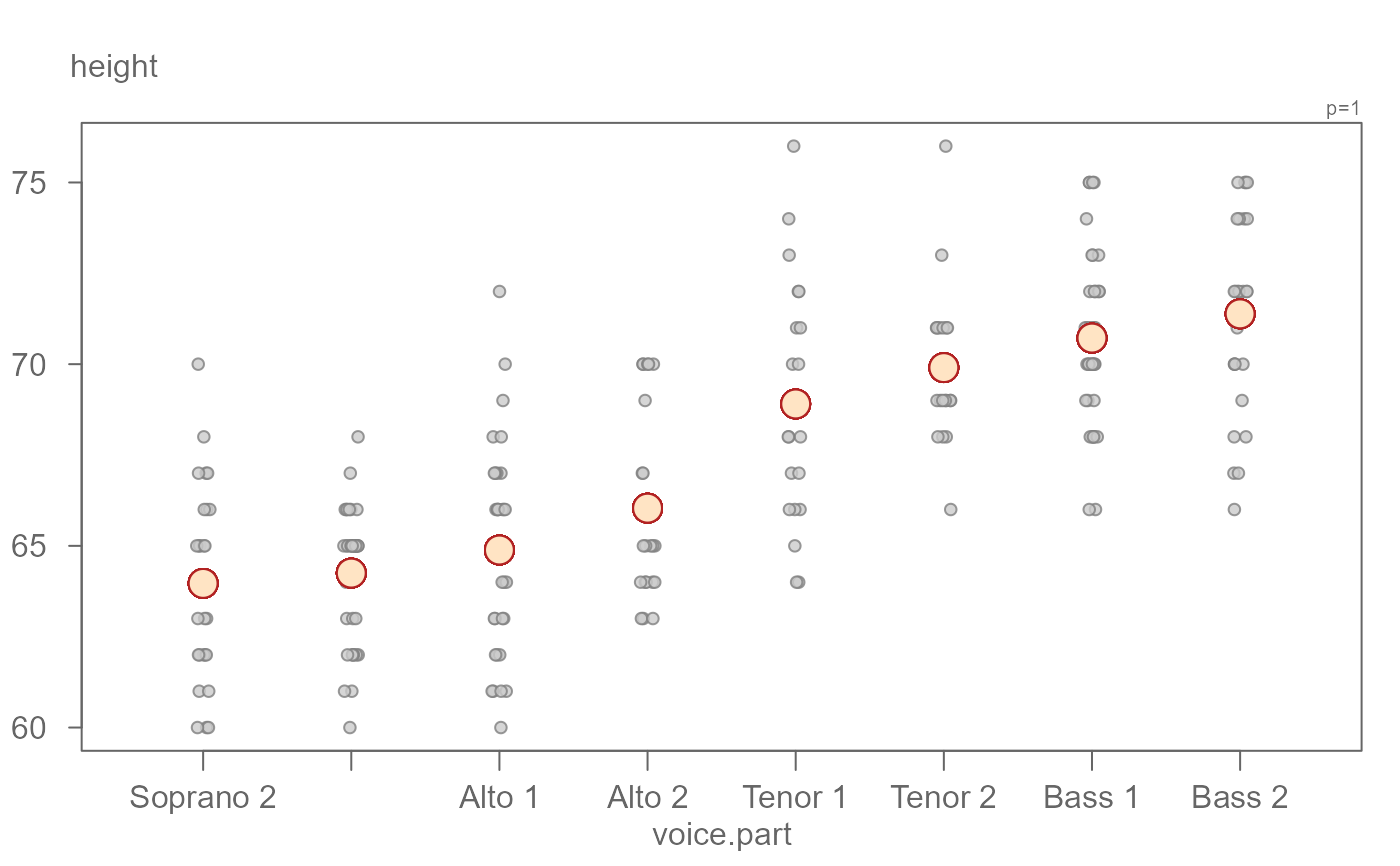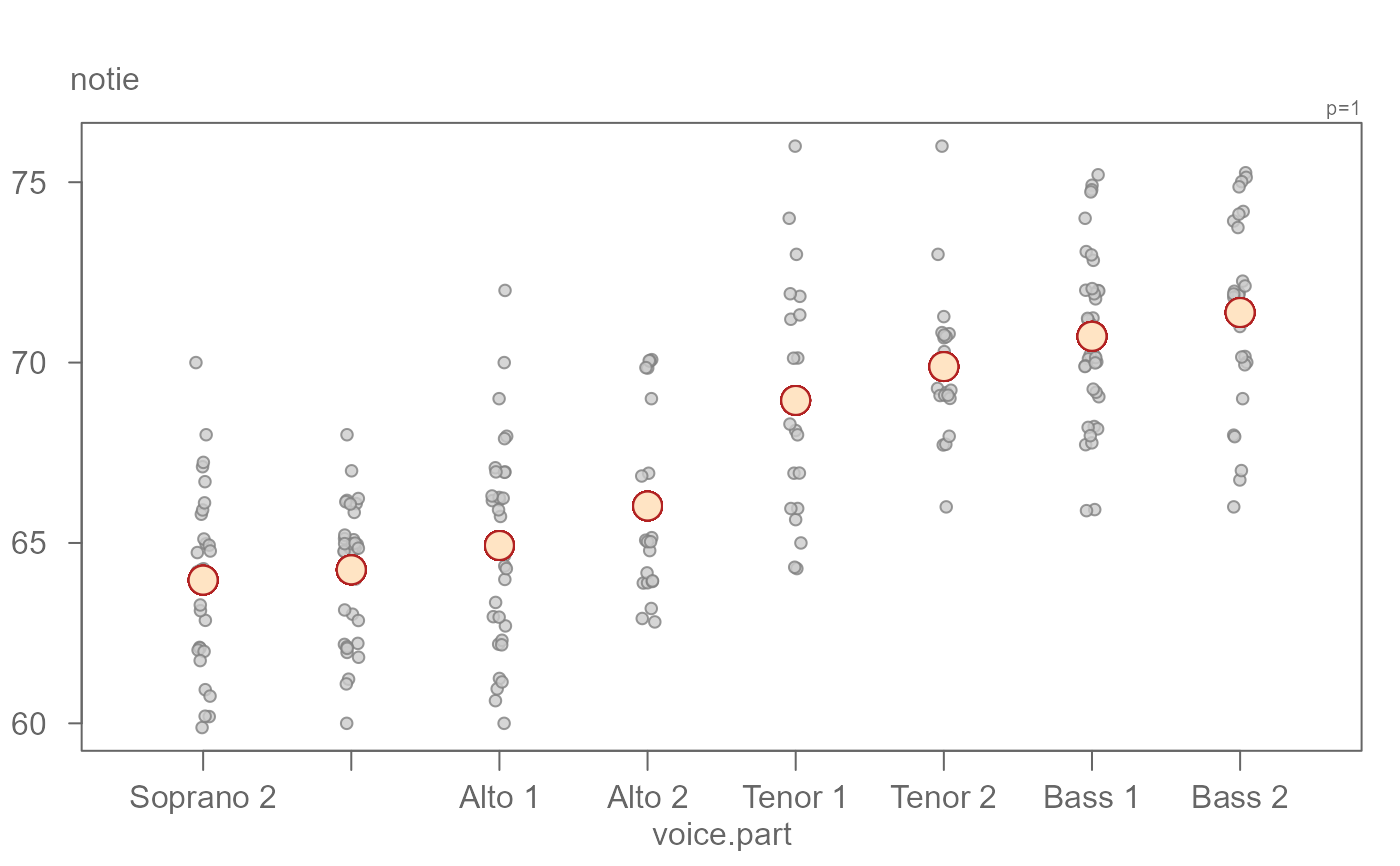Adjusts tied values in a numeric vector by adding or subtracting a small fraction of the range.
Arguments
- dat
A data frame or a numeric vector.
- x
Numeric column. Ignored if
datis a numeric vector.- fac
Column of categorical values. Ignored if
datis a numeric vector.- f
A numeric value specifying the fraction of the range of
xto use for perturbing tied values. Must be between 0 and 1.- rand
A logical value. If
FALSE, all adjustments are of fixed size based onf. IfTRUE, the adjustments are randomized within the range specified byf.- ...
not used.
Value
Returns the input numeric data with ties resolved. If dat is a
vector, a modified vector is returned. If dat is a data frame, a modified
vector corresponding to the column specified by x is returned.
Details
The function identifies tied values in the input vector x
and perturbs them slightly to break the ties.
If rand = TRUE, the adjustment for each tied value is randomized
uniformly with the lower and upper bounds defined by
[0, f * diff(range(x))]. If rand = FALSE, the adjustment is
deterministic and equal to +/- f * diff(range(x)). Alternating signs
(-1 and 1) are used to distribute adjustments symmetrically.
The deterministic approach may not eliminate all ties. For example, if four
values are tied, the output will split the values into two tied values.
Repeating the process on the output as needed will eliminate all remaining
ties.
Examples
set.seed(42)
x <- c(1, 2, 2, 2, 3, 4, 4, 5)
# Randomized adjustments
x1 <- eda_untie(x, f = 0.01, rand = TRUE)
#> [1] "There were 5 input ties."
x1
#> [1] 1.000000 1.963408 2.037483 1.988554 3.000000 4.033218 3.974330 5.000000
# Deterministic adjustments. Given that there are three elements sharing the
# same value (a value of 2 in this example), the data will need to be
# processed twice.
x2 <- eda_untie(x, f = 0.01, rand = FALSE)
#> [1] "There were 5 input ties."
x2
#> [1] 1.00 1.96 2.04 1.96 3.00 4.04 3.96 5.00
x3 <- eda_untie(x2, f = 0.01, rand = FALSE)
#> [1] "There were 2 input ties."
x3
#> [1] 1.00 1.92 2.04 2.00 3.00 4.04 3.96 5.00
# Random adjustments. Add up to +/- 0.5 inches to singer height values
set.seed(17)
singer <- lattice::singer
factor <- 0.5 / diff(range(singer$height)) # Get fraction that covers 0.5 inches
eda_jitter(singer, height, voice.part)
 singer$notie <- eda_untie(singer, height, voice.part, f = factor)
#> [1] "Bass 2 had 23 ties."
#> [1] "Bass 1 had 38 ties."
#> [1] "Tenor 2 had 18 ties."
#> [1] "Tenor 1 had 16 ties."
#> [1] "Alto 2 had 26 ties."
#> [1] "Alto 1 had 31 ties."
#> [1] "Soprano 2 had 28 ties."
#> [1] "Soprano 1 had 32 ties."
eda_jitter(singer, notie, voice.part)
singer$notie <- eda_untie(singer, height, voice.part, f = factor)
#> [1] "Bass 2 had 23 ties."
#> [1] "Bass 1 had 38 ties."
#> [1] "Tenor 2 had 18 ties."
#> [1] "Tenor 1 had 16 ties."
#> [1] "Alto 2 had 26 ties."
#> [1] "Alto 1 had 31 ties."
#> [1] "Soprano 2 had 28 ties."
#> [1] "Soprano 1 had 32 ties."
eda_jitter(singer, notie, voice.part)
